Menu
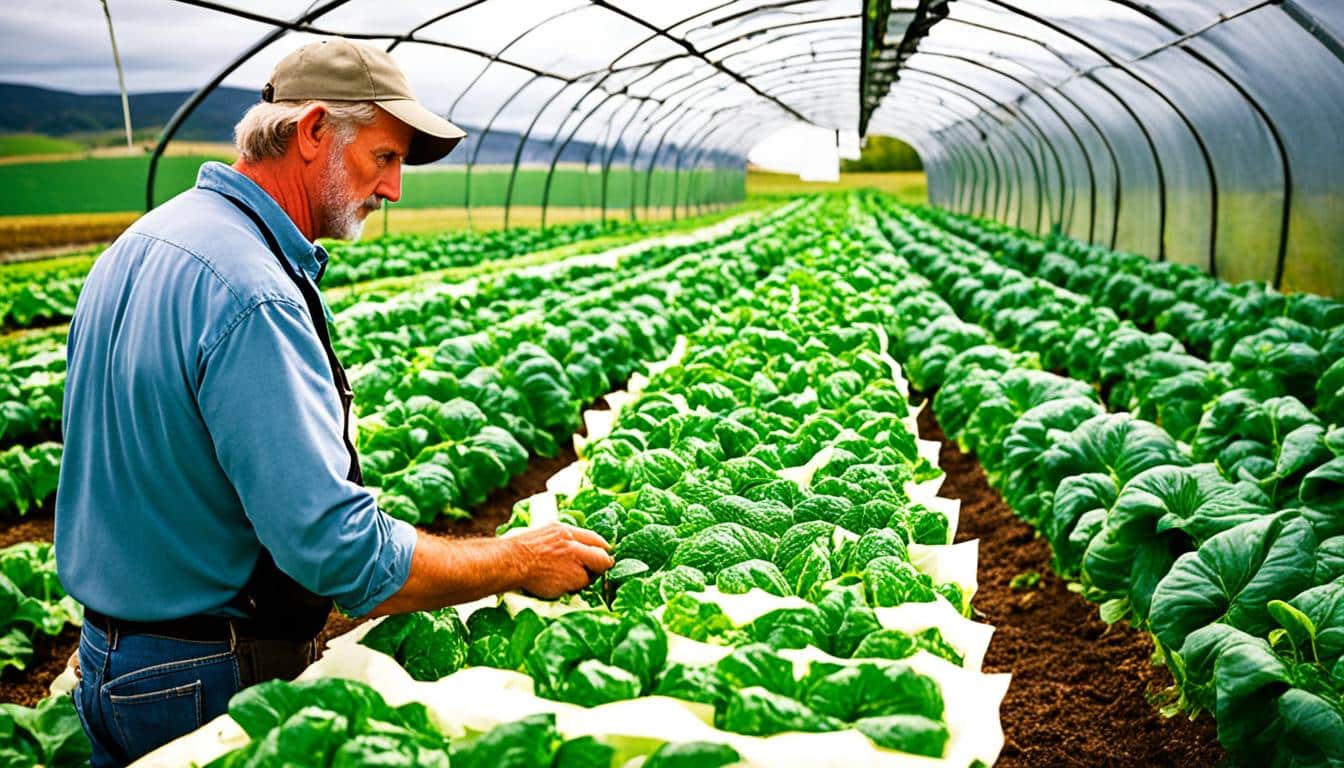
Did you know that organic food sales in the United States grew by over 12% in 2020? They reached a record $62 billion. This shows the increasing trust in and demand for organic produce. But as organics become more popular, safety questions arise. It’s vital to ensure organic produce food safety for consumer trust.
Organic farming is carefully planned to limit pollution and improve soil and water. It avoids the use of harmful chemicals. This includes saying no to synthetic fertilisers, sewage sludge, synthetic pesticides, irradiation, GMOs, and growth hormones.
The organic food regulations from the U.S. Department of Agriculture (USDA) are strict. Products have to go through a detailed approval process. This places them in categories like 100% organic, organic, or made with organic ingredients. Still, issues like germs on food worry people, no matter if the food is organic or not.
It’s vital to handle food properly to lower any health risks. Everyone should wash fruit and vegetables well, keep raw meat away from other foods, and store food right. This keeps food fresh and safe.
At the end of the day, both organic and non-organic foods can be safe and good for you. What’s different is how they are grown, processed, and handled. Their safety and health benefits are often similar.
Do you know what organic produce means? It’s vital if you’re thinking of eating more sustainably. The USDA regulates what can be called organic. It’s all about helping the environment and keeping people safe from harmful chemicals.
Organic farming uses special ways to grow food. It helps the earth stay healthy. It involves things like, using natural compost, not using harmful pesticides, and caring for the soil.
After passing strict checks, food products are given an organic label. The USDA ensures that only the best natural farming methods are used. This means no artificial help for the crops.
Many things can be organic, from fruits and veggies to dairy and meat. What makes them organic is how they’re grown. Farms get checked every year to make sure they’re still doing things the right way. Sometimes, they’re visited without warning.
The rules for organic farming are always getting better to keep things honest. The National Organic Standards Board asks for advice from the public. This helps make sure organic food truly is better.
| Type of Produce | Organic Farming Practices |
|---|---|
| Fruits and Vegetables | Use of compost, crop rotation, natural pest control |
| Grains | Lower toxic metal levels, use of organic inputs |
| Dairy Products | Pasture feeding, organic food for livestock |
| Meats | Healthy living conditions, disease protection through vaccinations |
Choosing organic food means you’re helping the earth. It cuts down on pollution and keeps water and soil safe. Being organic certified means farmers are using methods that are good for nature. This creates a cycle where farms and the environment help each other.
Organic farming uses methods that are good for the land and the environment. It focuses on improving soil health organic farming, saving water, and controlling pests naturally.
To keep the soil healthy, organic farmers rotate crops, add organic manure, and compost. The use of any harmful chemicals on the soil is not allowed for three years before planting organic crops. This care makes the soil more fertile, helps plants grow better, and supports diverse life.
Preserving water is key in organic farming. This is done to save water and keep the earth’s resources healthy. Methods like drip irrigation and using rainwater help save water. They also keep the soil in good condition.
Organic farming avoids using harmful pesticides. Instead, farmers use good bugs and other natural ways to control pests. This approach not only keeps the crops safe but also works well with nature.
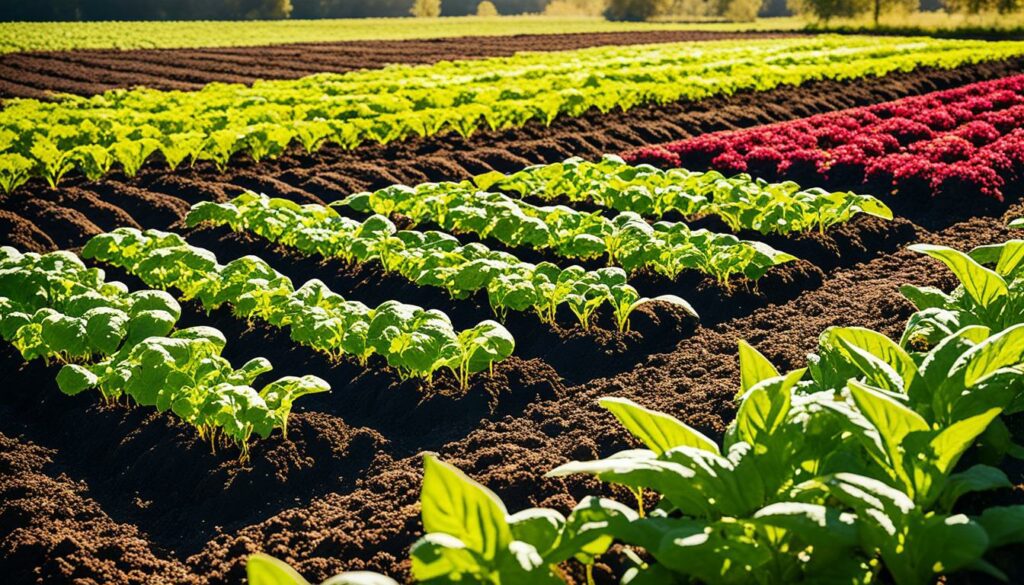
| Standard/Trend | Details |
|---|---|
| Organic Certification Content | At least 95% certified organic content is required for products labelled as organic. |
| Market Share in Western Europe (2005 Prediction) | Organic products will account for 5 to 10 percent of the market share. |
| Organic Farming Land Increase (1993-2000) | Austria (2.4% to 8.0%), Sweden (1.1% to 6.3%), Denmark (0.8% to 6.2%). |
| Biggest Market for Organic Products in EU | Germany |
| Herbivores Grazing Requirement | Ruminants must be on pasture for at least 120 days during the grazing season. |
The organic certification process is overseen by the USDA, ensuring organic products meet strict standards in the US. Operations must be certified by bodies recognised by the USDA. They inspect thoroughly each year to ensure these standards are met.
The USDA is the lead enforcer of organic food production standards in the US. The USDA organic label is the trusted stamp for organic foods here. Farms and facilities must update plans and pass annual inspections, including surprise visits. This guarantees the authenticity of organic products from farm to store.
Getting certified organically follows specific steps, ensuring high quality and proper record-keeping. Here’s what it involves:
Small-scale producers, making under $5,000 a year, are not required to certify, but they must follow all guidelines for their products to be sold as organic. The Strengthening Organic Enforcement rule helps ensure that certified organic products are reliably traceable.
Information on certified organic operations is open to the public in the Organic INTEGRITY Database. This database helps keep the certification process honest and lets the public give feedback on policy.
| Type | Requirements |
|---|---|
| 100% Organic | Must contain solely organic ingredients. |
| Organic | Must have at least 95% organic ingredients. |
| Made with Organic Ingredients | Must contain a minimum of 70% organic ingredients. |
Organic and conventional farming have key differences. Organic farming reduces synthetic inputs, follows strict rules, and supports sustainability. On the other hand, conventional farming aims for efficiency and high yields using advanced tech and chemicals.
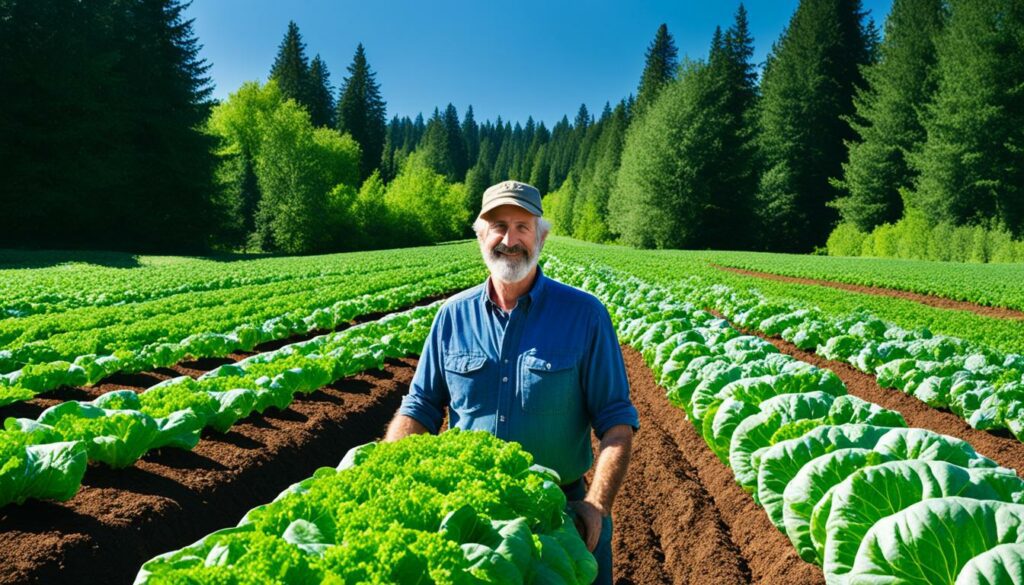
Organic farming uses fewer synthetic pesticides. They opt for natural solutions like neem oil and essential oils as a last option. In contrast, conventional farming relies heavily on synthetic pesticides. In a study, 38% of conventional crops had pesticide residues compared to 7% of organic crops.
Organic and conventional farming differ in how they fertilize. Organic farming uses natural ways, improving soil with green manure, composting, and crop rotation. This helps keep the ecosystem healthy. In contrast, conventional farming depends more on synthetic fertilisers and biotechnology. These methods boost crop yield but can harm the environment.
Organic farms take good care of their animals. They feed organically, grant pasture access, and avoid antibiotics and growth hormones. Although organic dairy farming’s global warming impact might be a bit higher, it uses less fossil fuel. Conventional farming, though, might use hormones and antibiotics for profit and efficiency.
| Aspect | Organic Farming | Conventional Farming |
|---|---|---|
| Use of Pesticides | Natural, sparing use | Synthetic, frequent use |
| Fertilisation | Green manure, compost | Synthetic fertilisers |
| Animal Husbandry | Organic feed, no antibiotics/hormones | Growth hormones, antibiotics |
| Cost | Higher | Lower |
| Land Use | 49% more land | Less land required |
Organic and conventional farming trade between sustainability and efficiency. Organic methods back environmental and animal health but may cost more and yield less. Conventional approaches strive for productivity with lower costs, risking the environment. Knowing these differences helps us choose wisely in farming and food purchase decisions.
Organic farming methods for livestock keep animals healthy and let them act naturally. This way of farming focuses on letting animals graze outside and eating organic food. It aligns with the main values of organic farming.
Organic livestock farming thrives on animals grazing in pastures. During the season, they must have access to outdoor areas. This leads to *organic livestock nutrition*. Graze is on pure, organic grounds, ensuring what they eat is healthy and clean.
This method results in animal products packed with essential nutrients, like omega-3. These nutrients are known for their health benefits. Organic meat and dairy are nutritionally superior because of this.
Antibiotics and growth hormones are completely banned from organic livestock. These animals have been living organically since they were near their end of pregnancy. They eat only organic food for their whole lives. This way, their growth is healthy and free from harmful residues.
Organic farms provide a healthy and natural living space for their animals, including outdoor areas and clean water. This enhances the animals’ well-being and the food product quality. It also helps animals behave as they would naturally.
Animals always have access to outdoor spaces and pasture based on these farming standards. This management is crucial to meet the strict criteria for organic certification. It shows that organic livestock farming is a complete, sustainable, and animal-friendly approach. It respects the environment and animal welfare.
In organic farming, sustainable techniques help keep the soil healthy for the long term. Methods like crop rotation, using cover crops, and mulching are key. They create an ecosystem on the farm that works together to support itself.
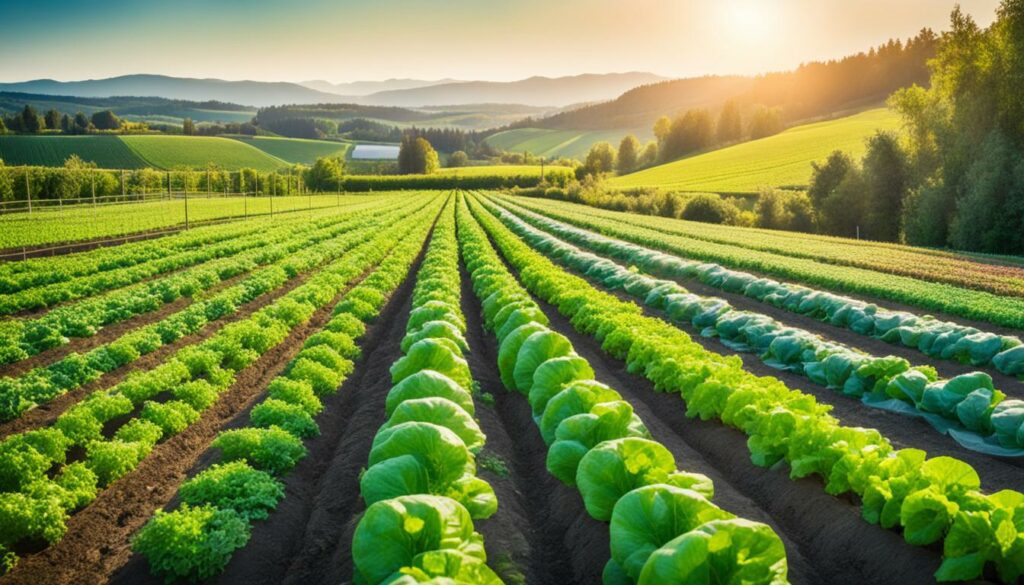
Crop rotation is vital in organic farming. It stops the soil from losing nutrients and breaks the cycle of pests. Farmers often grow different crops – not from the same family – on the same land for up to eight years. This practise keeps the soil fertile, reduces pests and diseases, and is crucial for organic farming to succeed.
Legumes and grasses are used as cover crops in sustainable agriculture. They prevent soil erosion, boost soil health, and help recycle nutrients. In Georgia, where soil quality suffered from past farming, aiming for 3% soil organic matter is important. Cover crops help reach this goal by improving the soil’s health and structure.
Mulching is important for organic farmers too. It reduces weeds, keeps the soil moist, and regulates its temperature. Farmers use natural materials such as straw, leaves, and grass clippings to form a layer over the soil. This layer keeps the water in and as it breaks down, adds nutrients to the soil without using chemicals.
| Technique | Benefits |
|---|---|
| Crop Rotation | Prevents nutrient depletion, breaks pest cycles |
| Cover Crops | Protects soil from erosion, enhances nutrient cycling |
| Mulching | Controls weeds, conserves moisture, enriches soil |
Organic food labels give us key info about a product’s organic credentials. They’re managed by the USDA to ensure they show accurately how organic a product is. With this info, shoppers can pick wisely and know what organic certification means.
“100% organic” items are the purest type. They must use only organic materials. This means nothing artificial is allowed. The journey from farm to table is closely checked each year to meet strict rules. For example, no harmful sprays near crops for at least three years.
Items just labelled as “organic” have 95% organic ingredients. The last 5% is from a small list of allowed non-organics. They can’t include fake chemicals. An annual check ensures they follow organic standards well.
“Made with organic ingredients” items use at least 70% organic stuff. Even though not all organic, they’re still good. They skip fake stuff too and get inspected yearly. But their rules aren’t as tough as the higher organic levels.
Getting the different labels helps us see how much organic love a product has. It encourages organic farming and helps us choose healthier options. The USDA works hard to make sure all organic produce meets top standards.
“For consumers, understanding what goes into these labels can help them make interests-based and values-driven choices in their purchases, staying aligned with their commitment to organic food production.”
Organic produce is known for several health perks. It boasts better nutrient levels and fewer harmful metals. Choosing organic for your meals is a smart move.
Organic fruits and veggies are packed with more goodness. They have extra antioxidants. Organic dairy and meat are rich in omega-3. This is because the animals eat natural grass. These changes can help your heart and other parts of your body.
Choosing organic lowers your pesticide intake. Studies confirm organic crops have less of these chemicals. This choice is vital for avoiding cancer and kids’ health problems.
Going organic means less contact with antibiotics. Unlike conventional methods, organic farming doesn’t use these drugs to grow animals faster. This helps keep away dangerous bacteria from our food.
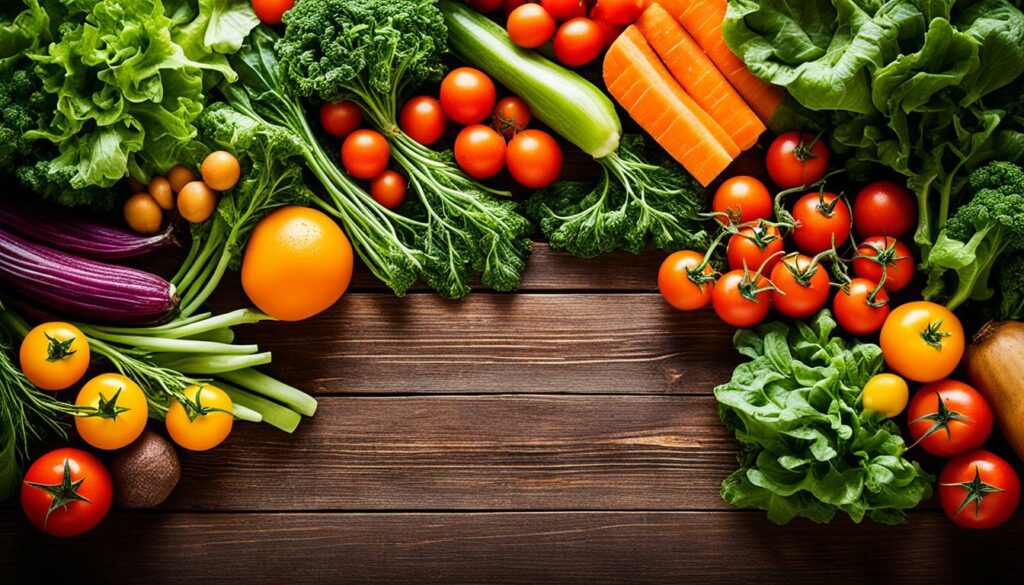
| Health Benefit | Organic Produce | Conventional Produce |
|---|---|---|
| Antioxidant Levels | Higher | Moderate |
| Pesticide Residue | Low | Higher |
| Omega-3 Fatty Acids | Higher | Lower |
| Total Nutritional Benefits | Enhanced | Varied |
Organic produce brings many good things. But it carries risks and safety issues too. Organic farming doesn’t use synthetic chemicals. This makes it prone to problems like mycotoxin contamination and more microbes.
Mycotoxins are a big worry for organic produce. With no synthetic fungicides, there’s a higher risk of fungi. This can lead to mycotoxin issues. The UK Food Standards Agency found organic and normal crops have similar nutrients. But the lack of synthetic help makes organic food more likely to have mycotoxins.
Organic produce can have more microbes. The use of composted manure is great for soil. But not handling it right can add to microbial dangers. Research shows organic food might have more microbes. This is because it doesn’t use synthetic disinfectants or irradiation. But the FAO says both organic and normal farming can make safe food.
Handling organic food safely is key. Good Agricultural Practices (GAP) help lower the dangers. Proper composting, strict hygiene, and cleaning are crucial. These steps are important for organic food safety. Despite risks, both types of food face the same safety rules. This means the dangers can be managed well with good handling.
Keeping food safe on organic farms is vital and needs ongoing care. Farmers follow certain steps to lower risks and keep their food top-notch. They use Good Agricultural Practices (GAP), smart composting to lessen dirtiness, and strict cleaning rules.
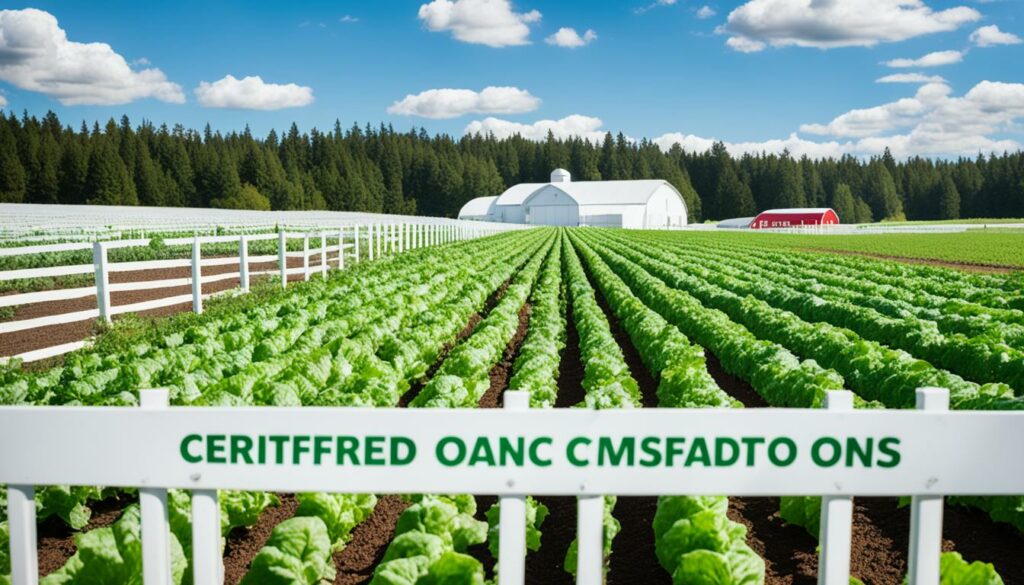
Organic farms rely on Good Agricultural Practices (GAP) for food safety. These practices make sure foods are safe and good. Farmers keep detailed farming records, check water quality, and use safe ways to gather crops. Putting GAP into action helps keep food clean and safe.
Using the right composting methods is a must to stop nasty bugs getting into the food. Making good compost means mixing ‘green’ and ‘brown’ materials just right, turning it often, and making sure it gets hot. This keeps food safe and the soil full of good nutrients.
Super clean farms are key for organic foods. Farmers keep their tools clean, store their food safe, and wash hands often. Inspectors check to see farms are following these strict rules, making sure the food stays safe. These steps stop both chemicals and germs from getting into the food.
So, making organic food safe is a team effort. Through using GAP in organic farming, good composting, and clean practices, farms keep their food safe and good. This matches what people want and what the rules say.
Organic produce is often at the centre of myths. These myths cover three key areas: its nutritional value, safety, and the costs involved. Exploring these myths helps understand what organic produce truly offers. This insight shows both its benefits and limitations.
Many think organic produce is full of more nutrients than regular produce. But, studies show there’s not much difference. The nutritional value depends on the crop and its growing conditions. Organic farming helps the soil and biodiversity but not in a way that hugely affects the food’s nutrition. People often overstate the benefits of organic food in this area.
The safety of organic and regular produce is a complex issue. Organic farming uses natural pesticides that are less harmful. It also doesn’t allow GMOs, which makes some feel safer. But, not all organic pesticides are totally safe. And, natural ways of fertilizing can bring more health risks. So, while organic food seems safer, it has its own set of risks to think about.
Cost is a big reason why myths about organic food exist. It can be up to three times more expensive than regular food. Organic food costs more to produce and has strict regulations, raising its price further. Despite being available from local and international sources, its higher price puts it out of reach for many. Even though most people buy it to avoid pesticides, its cost is a hindrance for many.
Organic farming is getting more popular for good reasons. It’s kind to the environment and supports a sustainable way of farming.
Organic farming makes a big difference in cutting pollution. It doesn’t use artificial pesticides and fertilisers, which often pollute water. This choice for natural methods helps keep our waters and soil cleaner. It’s also kinder to local wildlife and the planet in general.
Organic farming is great for keeping our land diverse. Research from 766 studies shows it supports more varied life. Because it doesn’t allow GMOs, it helps keep our ecosystems safe from certain farming risks. Several European countries are leading in protecting 20 percent of their land for organic use. This action shows a big commitment to saving wildlife.
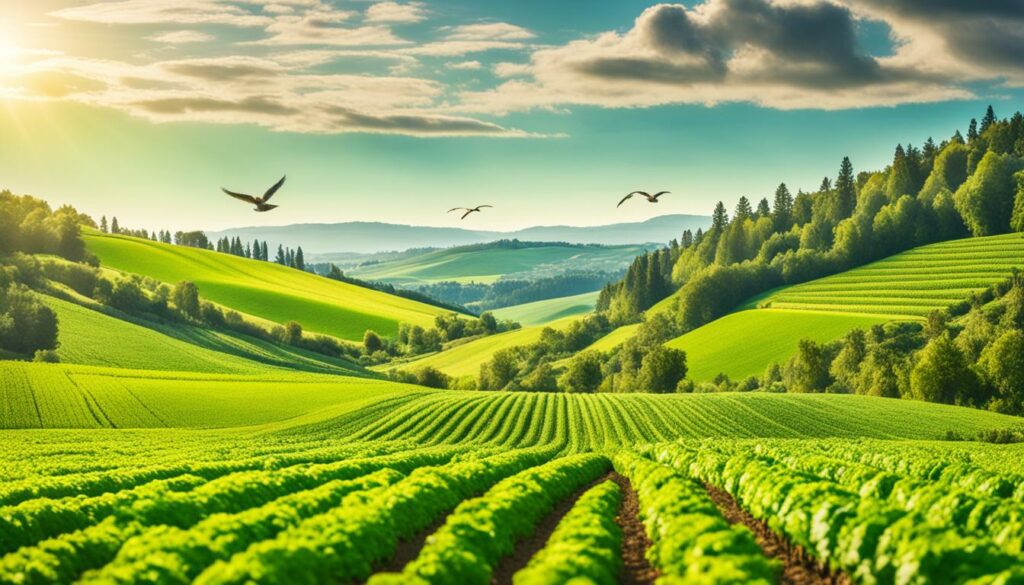
Looking at climate change, organic farming is a key player. It adds more carbon to the soil, which is good for the planet. This action helps to store carbon and lower harmful gas emissions. By using less harmful chemicals, it also helps fight against global warming. Places like Bhutan and Sikkim are fully into organic farming, proving it helps with climate goals.
More people are choosing health and eco-conscious options, making organic produce very popular. It might be hard to find the best organic products in the market, but there are easy ways to do this.
Look for certified labels like the USDA Organic seal when buying organic. This means the produce is free from synthetic chemicals, GMOs, and pesticides. For meat, eggs, and dairy, it shows they were raised under specific organic conditions, like natural feed and space.
Choosing fruits and vegetables in season means picking the freshest and best-priced options. These items are usually fresher because they’re picked when they’re at their best. They also travel shorter distances, which makes them more affordable. For example, buying local, in-season strawberries means less exposure to harmful pesticides.
Farmers markets help you support local growers and get fresh organic food. While not all local farms are officially certified as organic, many follow the same methods. Talking to farmers can help you understand more about how your food is produced. This way, you can buy products you know are truly organic.
In summary, look for certified labels, go for seasonal items, and visit farmers markets. These steps help you make better choices for both your health and the environment.
Organic produce comes from farms that use special methods to protect nature and people. These methods avoid using artificial fertilisers, synthetic pesticides, and GMOs.
Fruits, vegetables, grains, dairy, and meats are common organic foods. They are grown or made without harmful chemicals.
By rotating crops, using natural manure and compost, and protecting against soil erosion. These actions help keep the soil rich and healthy.
Organic farmers manage water wisely and use modern irrigation methods. This way, they save water and protect the environment.
In organic farming, pests are controlled naturally. This is done by using helpful insects, changing crops, and supporting different plant and animal species.
The USDA makes sure organic foods meet high standards. They set the rules and check if farms and food meet organic requirements.
To get certified, farms follow organic methods, keep good records, and pass checks. This is to show they’re truly organic. Small farms making less than ,000 a year don’t need certification but must farm organically.
Organic farming uses fewer pesticides, only natural ones. It also focuses on soil health and makes sure animals live well without growth drugs.
Feeding animals in a natural way, like letting them graze, makes their products more nutritious. These foods are better for people.
Organic farming uses smart methods to keep the environment healthy. This includes rotating crops, protecting the soil with plants, and using natural ways to fight weeds.
Look for the USDA label to know if food is organic. ‘100% organic’ means fully organic. ‘Organic’ means mostly organic. ‘Made with organic ingredients’ shows it has some organic parts.
Eating organic food means less harmful chemicals and more good nutrients. It also means lower toxic metals and fewer dangerous bacteria.
There’s a chance of more fungi and germs on organic food because they avoid strong chemicals. But, following proper farming steps can control that.
By sticking to safe farming ways, careful composting, and being super clean. This keeps the food and the land safe for all.
Organic food has less chemical residue. But, studies show the vitamins and minerals are much the same as non-organic food. It’s all about your choice to avoid chemicals.
Organic farming is good for the planet. It pollutes less, helps more plants and animals live, and it fights climate change by storing carbon in the soil.
Choose produce with official organic labels. Go for what’s in season for freshness and savings. Support local farmers’ markets to get closer to where your food comes from.